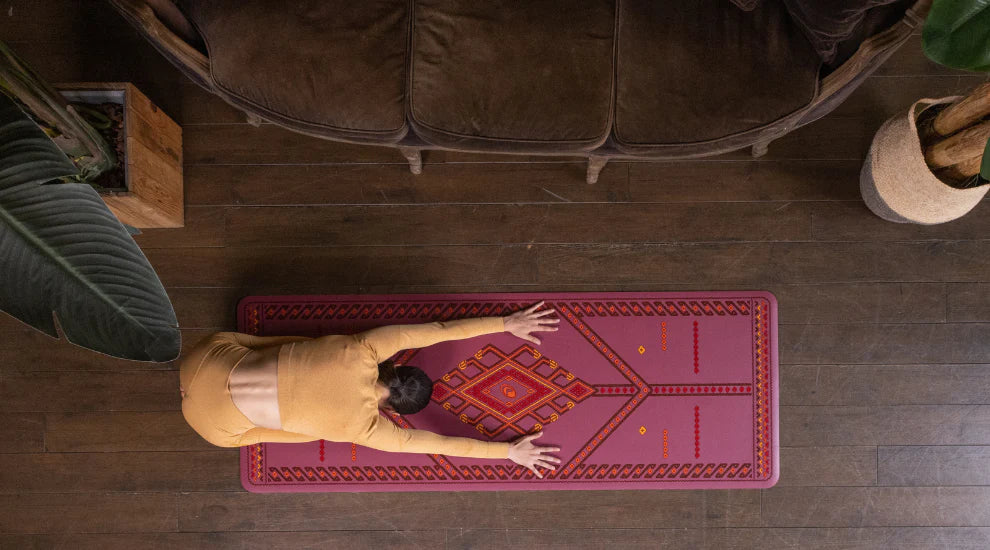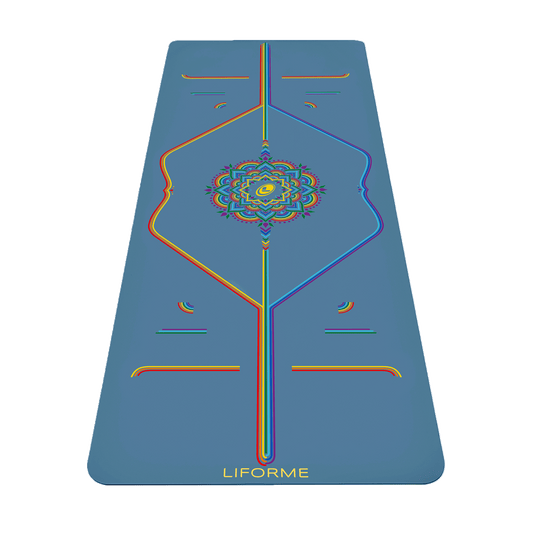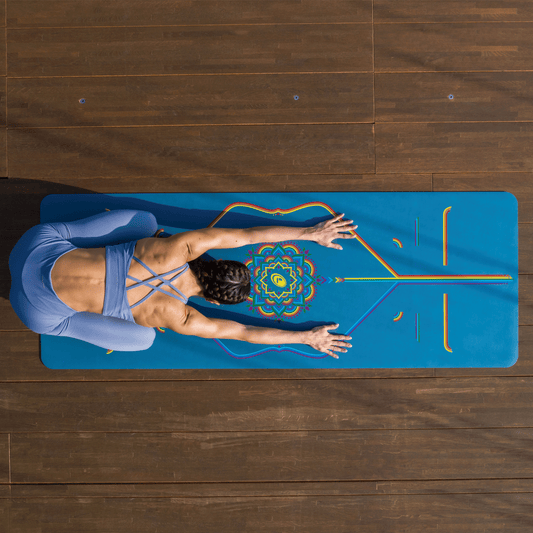Whether you’re just starting yoga or are an experienced student, figuring out how to do yoga at home is a super helpful way to keep your practice consistent when your schedule, budget, location, or preference takes you away from the studio.
Though it seems simple in theory (just roll out your mat, right?), in practice it can be difficult to know what to do on your freshly unrolled mat and how to stay motivated. Our best strategies and tips can help you start and maintain the home yoga experience that works best for you.
A Few Yoga Basics
What Is Yoga?
In its simplest modern form, yoga is a system of poses, often done in flowing succession, that stretch and strengthen your entire body. As a movement practice, the physical side of yoga (called asana) fosters a mind/body connection that is an effective way to relieve stress and improve your well-being.
Top Tip: If you are brand new to yoga, check out our Complete Guide for Beginners for much more information and 8 beginners' poses.
Should I Do Yoga a Home?
There are lots of reasons to do yoga at home. Flexibility (pun intended) is top of the list. You can’t always arrange your schedule to fit in studio classes, which can also get expensive. Although learning from an experienced teacher is ideal for beginners, having the option to practice at home allows you greater control.
If you try both group classes and home practice, you’ll find the right combination that works for you, which may also vary over the seasons of your life. The two can coexist quite happily, with led classes helping you with alignment and inspiration and home classes allowing you the time and freedom to explore your own inclinations.
Getting Started at Home
Where to Practice
Don’t let the lack of a dedicated space for yoga in your home put you off. Although it’s lovely to have a pristine room with natural light away from the noise of the household and the street, all you actually need is a space that is 185cm long x 68cm wide upon which to lay down your mat.
If you find yourself close to a wall or a piece of furniture, you can even incorporate it into your practice for support in balancing postures. Being able to focus your attention on your interior work instead of on external circumstances is good practice for life off the mat as well, since you often don’t get the ideal conditions to work through your problems and deal with your stressors.
Top Tip: Check out our 5 budget-friendly ways to get that yoga studio feeling at home for inspiration.
When to Practice
You can do yoga at home any time you want. However, that very flexibility can be a stumbling block. Finding a practice time that works for you and getting into a regular routine are key. Put your mat time down on your calendar so that it doesn’t end up at the bottom of your to-do list.
Be realistic about the time that you can dedicate to yoga. If you’re not used to long sessions, start small. Even 10-15 minutes helps create a habit and will be beneficial. Don’t plan to practice early in the morning if you hate the sound of your alarm. Set yourself up for success.
Top Tip: If you take one-hour classes at the studio, you can get almost as much asana in a 45- or even a 30-minute video class because studio classes often start a few minutes late, open with a chant, dharma talk, or meditation, and end with the same. Video classes tend to get right down to business.
 How to Practice at Home with Videos
How to Practice at Home with Videos
Following a led class via video can provide structure and motivation to your fledgling home practice. Once upon a time, people bought yoga DVDs (or even VHS tapes!) and followed the same routines over and over. The internet has solved that tedium by bringing an abundance of yoga videos straight to our phones and laptops.
The major web-based yoga video platforms (search “online yoga classes” to find them) all operate on a similar model. Their roster of teachers creates classes of varying styles, lengths, and intensities, which are updated frequently so there is always something new to try. Most of these platforms offer a free trial period, so shop around until you find one you like. Once you settle on a site, expect to pay around $15- $20 a month, which is about the cost of a single in-studio class.
If you want to pay even less (like nothing), search “yoga classes” on YouTube for many free offerings, including full-length classes and lots of pose tutorials, which can really help you establish good alignment habits. These may vary in quality (they are free, after all), so also check your trusted yoga websites when you have questions about unfamiliar poses.
Top Tip: Our alignment deep-dives are under the ‘Practice’ tab on our Live for More blog. Or, check out the Liforme YouTube channel for some great home practice flows with top yoga teachers.
…Or Without Videos
You can also make up your own routines or repeat sequences you’ve done in class. If you have a bit more yoga experience, try working up to a challenging pose or allowing your body to move intuitively after warming up with Sun Salutations. The more yoga you have done, the easier this will be, so even if you plan to do most of your yoga at home, it will help you immeasurably to take the occasional in-real-life class for inspiration and alignment correction.
Though it can be tempting to skip Savasana when no one’s watching, try to take at least a short rest in Corpse Pose after every practice. It helps your body integrate all the new information it takes in every time you do yoga and starts to introduce the mindfulness technique of relaxed awareness.
Top Tip: One pose is often enough to jumpstart a flow. Think about which pose your body is asking for and go from there. New yogis, check out our 7 essential poses for beginners.
Yoga at Home for Beginners
If you are brand-new to yoga (welcome!) or have only taken a few classes, look for a beginner's series on one of the major platforms. Signing up for a series ensures that you’ll make it onto your mat regularly and get the basic info all newbies need.
When you can, take an in-studio class for beginners to supplement your home practice and make sure you are on the right alignment track. When you return home, using a mirror to check out your poses can help reinforce your body awareness, which is the connection between what your mind thinks you’re doing and what your body is actually doing.
Top Tip: When it comes to alignment, feedback is key, so when you’re not with a teacher, a yoga mat with guidelines is invaluable. Check out our yoga alignment for home practice guide to learn how to get the most out of the AlignForMe system at home.
Essential Home Yoga Equipment
A yoga mat is the primary piece of equipment you’ll need. Though it’s tempting to go with the cheapest option, there are lots of reasons not to. Cheap PVC mats are slippery and they aren’t biodegradable. No surprise, we recommend an eco-friendly yoga mat with a super grippy practice surface and an intuitive alignment guide right on the mat. The alignment guide is ideal for home practice because it helps you translate the instructions you hear into actions in your body.
Yoga blocks are also very useful to have at home. Straps and blankets are more easily improvised from things you probably already have around the house (belts and blankets work well). Wear comfortable clothes that allow you to stretch and move freely.
Tippity Top Tip: Get yourself a Liforme Yoga Mat!
Yoga Like No One's Watching
A home practice creates a safe environment in which to explore and grow. There's no one correct way to do yoga, so allow yourself to follow your intuition, find what feels good, and use all the resources that are available to you to create a home practice routine that's as unique as you are.







































